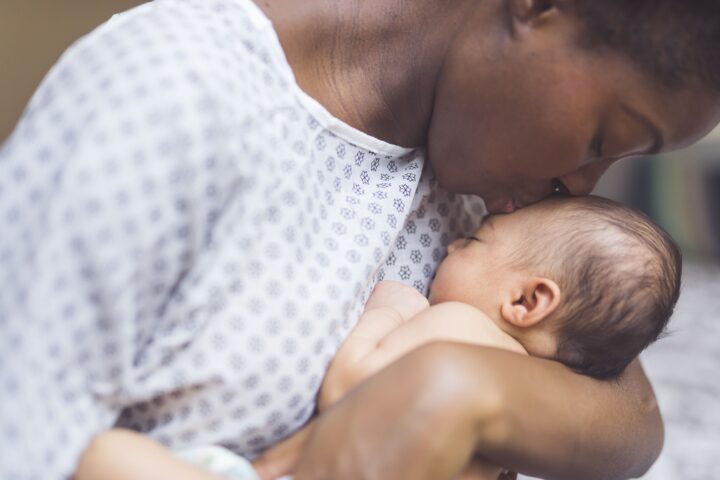Working together for safer maternity care


Importantly both pregnancy and labour are deeply personal, cultural, and emotional experiences. Expectations can be high and, whatever the outcome, specific moments are often vividly remembered for life.
Maternity services have faced intense scrutiny in recent years. With another national review expected soon, maternity safety remains a major concern for everyone involved, for politicians, staff, those using maternity services and the wider public.
We asked Dr Jan van der Scheer (THIS Institute Senior Research Associate), Emma Crookes (THIS Institute maternity patient and public involvement panel member), and Nicole Lawal (founder and managing director of B3 – Bumps Birth and Belonging CIC) for their insights.
While Jan notes that the forthcoming review launched by Wes Streeting reflects a growing recognition of the challenges facing UK maternity care, he emphasises the urgent need to translate learning into lasting improvement, “to avoid the risk of repeating a cycle of inquiry without sustained action.”
Emphasising persistent inequities in maternity outcomes, Jan says that efforts to improve care must be relevant, inclusive, and responsive to the needs of people who use services. He explains:
“Just as an example, according to multiple MBRRACE reports, Black women in the UK are nearly four times more likely to die during pregnancy, childbirth or the postnatal period than white women. And it’s not just outcomes. There are also differences in how women are listened to and treated. We must acknowledge it, understand it, and make sure that improvement efforts are shaped by the people most affected.”
Emma Crookes agrees, and says,
One of the problems, especially for inequalities, is that systems are failing to listen to women, birthing people, and families. And that’s down to blame culture – listening purely to respond and deflect rather than to understand and learn.
Working together
Integral to THIS Institute’s way of working is co-design. In maternity care, that means working in partnership with women, birth partners, midwives, obstetricians, and others to create clinical tools and processes that are genuinely useful and reflect the perspectives of all involved. For example, we’ve co-designed a maternity safety framework with women, healthcare professionals and policy makers, worked with a wide range of professionals to adapt obstetric emergency response processes during the COVID-19 pandemic, and are currently co-designing new ways to improve escalation of care (when staff recognise that a baby might be in distress during labour) with women, maternity professionals and policy- makers.
THIS Institute uses a wide range of methods to engage with diverse groups, ranging from large-scale engagement using the secure collaborative Thiscovery platform to in-depth methods like workshops and simulations in real healthcare settings.
Jan is hugely positive about working with a dedicated maternity patient and public involvement (PPI) panel, a diverse group of people with lived experiences of maternity care. So far the panel has mostly contributed to specific projects but is increasingly working to help connect ideas across our broad maternity portfolio. Jan has found their insights invaluable. In-person and online workshops that intentionally involve women and birth partners from a range of different backgrounds – including people whose voices are often under-represented – are just some of the techniques used to enable everyone to have their say.
Kiri Dargaville, THIS Institute’s Research Engagement and Involvement Adviser, is equally enthusiastic about the value of the panel. She says, “The impact of this programme comes directly from working side by side with the PPI panel, women and their birth partners. Their insight and lived experience shape research in ways we could not achieve alone, ensuring that what we produce has relevance and real-world impact. We simply can’t do this work without them.”
Nicole Lawal feels that participating in the THIS maternity PPI panel has been a truly eye-opening and meaningful experience for her. Collaborating closely with the THIS Institute team, as well as being involved with the B3 community, has enabled voice to be given to the often traumatic experiences of Black women and families to make positive change in maternity services. Nicole says,
It didn’t feel extractive or transactional. Instead, it cultivated authentic partnership and understanding. While such collaborative approaches are often talked about in theory, working with THIS Institute has demonstrated what true, honest co-production really looks like.
Avoiding Brain Injury in Childbirth (ABC)
One key example of THIS Institute’s co-design approach is the Avoiding Brain Injury in Childbirth (ABC) programme, commissioned by the Department of Health and Social Care (DHSC), and led by a collaboration of the Royal College of Midwives, Royal College of Obstetricians and Gynaecologists, and THIS Institute. The programme combines scientific evidence, clinical expertise, and lived experience to support lasting improvement, and defines standards of clinical practice. It is supported by co-designed resources such as high-quality training, clinical tools, and implementation guidance. Jan explains:
“Over the last year, ABC was piloted in 12 maternity units, using a train-the-trainer model to build capacity within multi-professional teams. That allowed nearly 350 staff to be trained in just a few months. All the resources have been handed to DHSC, and the government is planning the national rollout in Autumn 2025.”
An important part of the ABC programme is supporting good communication and decision-making with those in labour and their birth partners – especially during emergencies like deterioration of a baby during labour or impacted fetal head during caesarean birth. These situations are often emotionally charged, clinically complex, and involve people of many different backgrounds. Co-design helped in developing inclusive, patient-centred tools and resources:
The PPI panel and a range of workshops with women and their birth partners played a vital role in shaping ABC’s clinical tools and training resources, making sure they help staff to communicate more clearly and include people meaningfully in decisions, even under pressure. The panel and workshop discussions helped us understand better what matters most in those moments.
Emma strongly believes that multidisciplinary teams training together should be standard practice for all types of care, not just for emergencies. She emphasises that training must continue to engage with women, birthing people, and families in partnership, since they can identify opportunities to keep families’ experiences and outcomes at the forefront. Reflecting on what makes this kind of improvement work effective, Emma underlines the importance of building relationships: “The mutual respect between the clinical advisors and PPI Panel has been invaluable, and I believe, resulted in high quality outputs. This respect was based on building trusting relationships – which took time, value, and recognition.”
Nicole recognised the ABC team’s commitment to centring the voices of women and families at every stage:
Their openness about not having all the answers right now, and their willingness to keep listening, revising, and taking action in partnership with us, is at the core of this work.
Jan agrees, “Our success is based on people feeling heard – and being part of creating something positive rather than just being criticised for things that aren’t working well. It shows the importance of collaboratively identifying problems, co-designing solutions, and evaluating those solutions.”